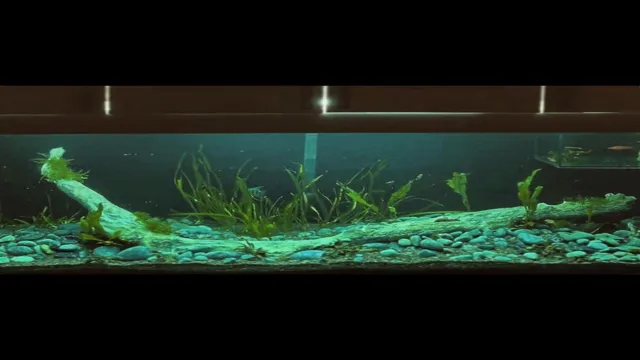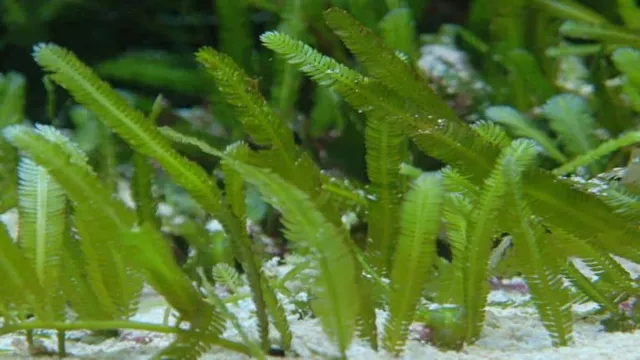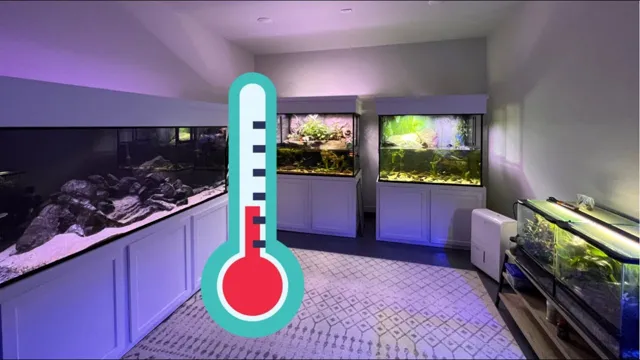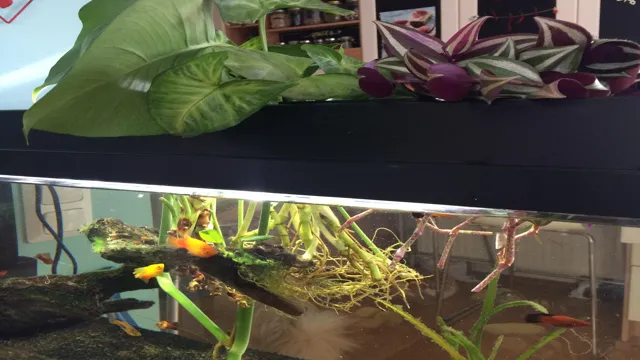Are you a proud owner of a new aquarium and looking to add shrimp to your aquatic family? Well, you’re in luck! Not only are shrimp fascinating creatures to watch, but they also play a crucial role in the balance of your tank’s ecosystem. However, before you go ahead and add new shrimp to your aquarium, there are a few important things to consider. Firstly, it’s essential to understand the specific needs of the species of shrimp you wish to add.
Each type of shrimp has its own unique requirements, such as water temperature, pH levels, and dietary preferences. Failing to provide these conditions could lead to stressed or sick shrimp, which could harm the health of your entire tank. Secondly, it’s crucial to quarantine any new shrimp before introducing them to your aquarium.
This step not only helps to prevent the spread of diseases, but it also gives the shrimp time to adjust to their new environment. Quarantining new shrimp for at least two weeks can help ensure that they are healthy and ready to join your existing aquatic family. Finally, make sure to introduce the new shrimp slowly and carefully.
Sudden changes in water conditions can be stressful for shrimp, and adding too many new shrimp at once can also cause issues with aggression and competition. It’s best to start with just a few shrimp and gradually increase the number over time. Adding new shrimp to your aquarium can be an exciting and rewarding experience, but it’s crucial to do so with caution and careful consideration.
By following these tips, you can help ensure the health and happiness of your new aquatic pets and maintain a thriving ecosystem in your aquarium.
Preparing for the New Shrimp
Adding new shrimp to an aquarium can be both exciting and nerve-wracking. To make the introduction as seamless as possible, it’s essential to prepare the tank and its occupants beforehand. Firstly, ensure that the water parameters are optimal for the specific type of shrimp being added.
Introducing shrimp to unsuitable water conditions can cause stress and even death. Secondly, quarantine the new shrimp for a couple of weeks to prevent the spread of disease or parasites to other aquatic life. Lastly, acclimate the new shrimp slowly to the tank environment by drip acclimation or adding small amounts of tank water into their tank over a few hours.
By following these steps, the new shrimp has a better chance of settling into their new home and coexisting peacefully with the current inhabitants.
Test Water Parameters
Preparing for the arrival of new shrimp to your aquarium can be an exciting time, but it’s important to ensure that their new home is suitable for them. Testing the water parameters is a crucial step to guarantee the optimal living conditions for your new shrimp. A test kit can measure the ammonia, nitrite, and nitrate levels in the water as well as the pH, alkalinity, and hardness.
These parameters can directly affect the health and well-being of your shrimp, so it’s important to make sure they are in the appropriate range. Keeping a log of water parameter tests can also be helpful in identifying any changes or potential issues in the future. A little bit of preparation can go a long way in ensuring the success of your new shrimp in their new home.

Acclimate the New Shrimp
Preparing for the new shrimp can be exciting, but it’s important to ensure the little guys have a smooth transition into their new home. First and foremost, it’s crucial to acclimate the shrimp to their new environment. This means letting them gradually get used to the temperature and water chemistry of their new tank.
There are a few methods for doing this, but one of the easiest is the “drip acclimation” method. This involves slowly dripping water from the new tank into the bag or container holding the shrimp over the course of several hours. This allows the shrimp to acclimate to the new conditions without causing too much stress or shock. (See Also: How to Make an Aquarium Cooler When It’s Hot Indoors: Tips and Tricks)
It’s also important to make sure the new tank is fully set up and cycled before introducing any new shrimp. This means ensuring the water chemistry is stable and there is a sufficient amount of beneficial bacteria to process waste. By taking these steps, you can give your new shrimp the best chance at a happy and healthy life in their new home.
Introducing the New Shrimp to Your Tank
When it comes to adding new shrimp to your aquarium, it’s important to take things slow and steady. First, make sure that the water conditions in your tank are suitable for the new shrimp. This means ensuring that the pH levels are within the recommended range, and that the water temperature is appropriate.
Once your water conditions are in order, it’s time to introduce the new shrimp. It’s best to acclimate them slowly to their new environment by floating the bag they came in for around 15 minutes. This will allow the water temperature to gradually become the same as the tank water.
When you do release them, make sure to turn off any filters or pumps to prevent the shrimp from being sucked in. It’s also important to monitor the new shrimp closely for the first few days, checking for any signs of stress or illness. By taking your time and following these steps, you can help ensure a smooth and safe introduction for your new shrimp into the aquarium.
Release the Shrimp Slowly
Introducing new shrimp to your fish tank can be an exciting experience, but it’s essential to release them slowly to ensure their safety. When introducing a new shrimp, it’s important to acclimate them to the water temperature and pH level of the tank. Start by floating the bag containing the shrimp in the water for about 15 minutes, allowing them to get used to the water temperature.
Once acclimated, release the shrimp slowly into your tank. This process is important because sudden changes to the water can cause stress and even death to the shrimp. Additionally, monitor the shrimp closely for the first few days to ensure they are adjusting to the new environment well.
If you notice any signs of stress, separate the shrimp immediately and consult with a fish specialist. By taking these precautions, you can ensure that your new shrimp will thrive in their new home.
Observe the New Shrimp’s Behavior
Introducing a new shrimp to your tank can be an exciting but nerve-wracking experience. Once you have properly acclimated the shrimp, it’s time to observe their behavior in your tank. Keep an eye on the new shrimp to ensure they are adjusting well to their new environment.
It’s normal for the shrimp to hide or stay still for the first few hours or even days. However, if the shrimp remains motionless or appears stressed even after a few days, it may be an indication that something is wrong. Check the water parameters to make sure they are suitable for the shrimp, and monitor the behavior of other tank inhabitants to ensure they are not harassing the new addition.
It’s important to remember that each shrimp has a unique personality, and some may take longer to adjust than others. Give the new shrimp time and space to get comfortable in their new home, and soon you’ll be able to appreciate their unique characteristics and behaviors. Overall, introducing a new shrimp to your tank requires patience and observation, but it can be a rewarding experience once they settle in.
Feed the Shrimp
If you’re a shrimp enthusiast, introducing a new shrimp to your tank can be an exciting experience. However, it’s important to approach the process with caution and care to ensure the success of both the new shrimp and the existing inhabitants of your tank. Before adding a new shrimp, make sure your tank conditions are ideal for its species, including temperature, pH levels, and water quality.
It’s also important to acclimate the new shrimp slowly to its new environment to prevent shock. When it comes to feeding, be sure to offer a variety of foods to meet the nutritional needs of your shrimp. Algae, pellets, and blanched vegetables are all excellent options. (See Also: How to Clean Rubber Aquarium Decorations Easily and Effectively)
Pay attention to how much your shrimp are eating, as overfeeding can cause water quality issues. Overall, introducing a new shrimp to your tank can be a rewarding experience, but it’s important to do so with care and attention to ensure a healthy and happy aquatic community.
Maintaining a Healthy Environment
Adding new shrimp to your aquarium can be a great way to enhance your aquatic environment. However, it’s essential to follow the right steps to make sure your new shrimp adjust well and thrive in their new home. Firstly, choose healthy shrimp that are compatible with your existing tank inhabitants and water conditions.
Before introducing them, acclimatize the shrimp to the water in their canister gradually. After a few hours, release the shrimp into the aquarium directly or use a net to lower them into the water. Keep a keen eye on their behavior to make sure they’re settling in well, and maintain regular water changes to avoid any fluctuations in water quality.
Following these steps will ensure that your new shrimp successfully integrate into your aquarium, keeping your aquatic environment healthy and robust.
Keep Water Parameters Stable
Keeping water parameters stable is crucial to maintaining a healthy aquatic environment. Fluctuations in pH levels, temperature, and nitrate/ammonia levels can be stressful or even fatal for fish, plants, and invertebrates. In order to maintain stability, it’s important to regularly test the water and make adjustments as needed.
This includes performing partial water changes to reduce accumulated waste and adding beneficial bacteria to break down harmful toxins. Think of it like tending a garden – targeted care is necessary to ensure everything grows in harmony. By keeping water parameters stable, you can help ensure your aquarium or pond remains a healthy and thriving ecosystem for all inhabitants.
Clean Your Tank Regularly
Maintaining a healthy environment for your fish is crucial for their overall well-being. One of the most important aspects of keeping your tank clean is performing regular cleanings. Not only does this remove any built-up debris and waste, but it also helps to prevent the growth of harmful bacteria and algae.
Neglecting to clean your tank can lead to poor water quality, which can cause a range of health problems for your fish. It’s recommended that you perform a partial water change every two weeks and thoroughly clean your tank every month. When cleaning your tank, make sure to use aquarium-safe products and avoid using any harsh chemicals that can harm your fish.
By maintaining a clean and healthy tank, your fish will thrive and you’ll be able to enjoy their beauty for years to come.
Conclusion
Adding new shrimp to your aquarium can be a great way to add diversity and excitement to your underwater community. But, just like any other type of addition to your social circle, it’s important to make sure the new shrimp are compatible with your current residents and that they’re introduced in a safe and thoughtful way. Think of it like bringing a new date to a party – you want to make sure they get along with your friends and that everyone has a good time.
So, take the time to research the specific type of shrimp you’re interested in and their compatibility with your existing tank mates. Then, use acclimation methods like drip acclimation to gradually introduce the new shrimp to their new home. By following these steps, you can ensure a smooth and successful integration and enjoy the lively and colorful world of shrimp in your aquarium. (See Also: How to Determine Heater Size for Aquarium: A Complete Guide for Beginners)
And who knows, maybe they’ll even inspire you to throw your own underwater party!”
FAQs
Can I add new shrimp to an established aquarium?
Yes, you can. However, it is important to acclimate the new shrimp slowly to prevent stress.
How long should I acclimate new shrimp before adding them to the aquarium?
It is recommended to acclimate new shrimp for at least 30 minutes to an hour.
Should I quarantine new shrimp before adding them to my aquarium?
It is always a good idea to quarantine new shrimp for a few weeks to prevent introducing any potential disease or parasites into the aquarium.
How many new shrimp can I add to my aquarium at once?
It is best to add new shrimp in small groups of 2-3 to avoid overwhelming the tank’s bio-load.
What water parameters should I check before adding new shrimp to my aquarium?
You should check the pH, ammonia, nitrite, and nitrate levels to ensure they are within a suitable range for the specific type of shrimp you are adding.
Can I add new shrimp to a community aquarium with fish?
Yes, you can as long as the fish are not aggressive and the aquarium is large enough to provide adequate hiding places for the shrimp.
What should I feed new shrimp when I first add them to the aquarium?
You can feed them small amounts of shrimp food or blanched veggies, such as spinach or zucchini, to provide them with proper nutrition.







